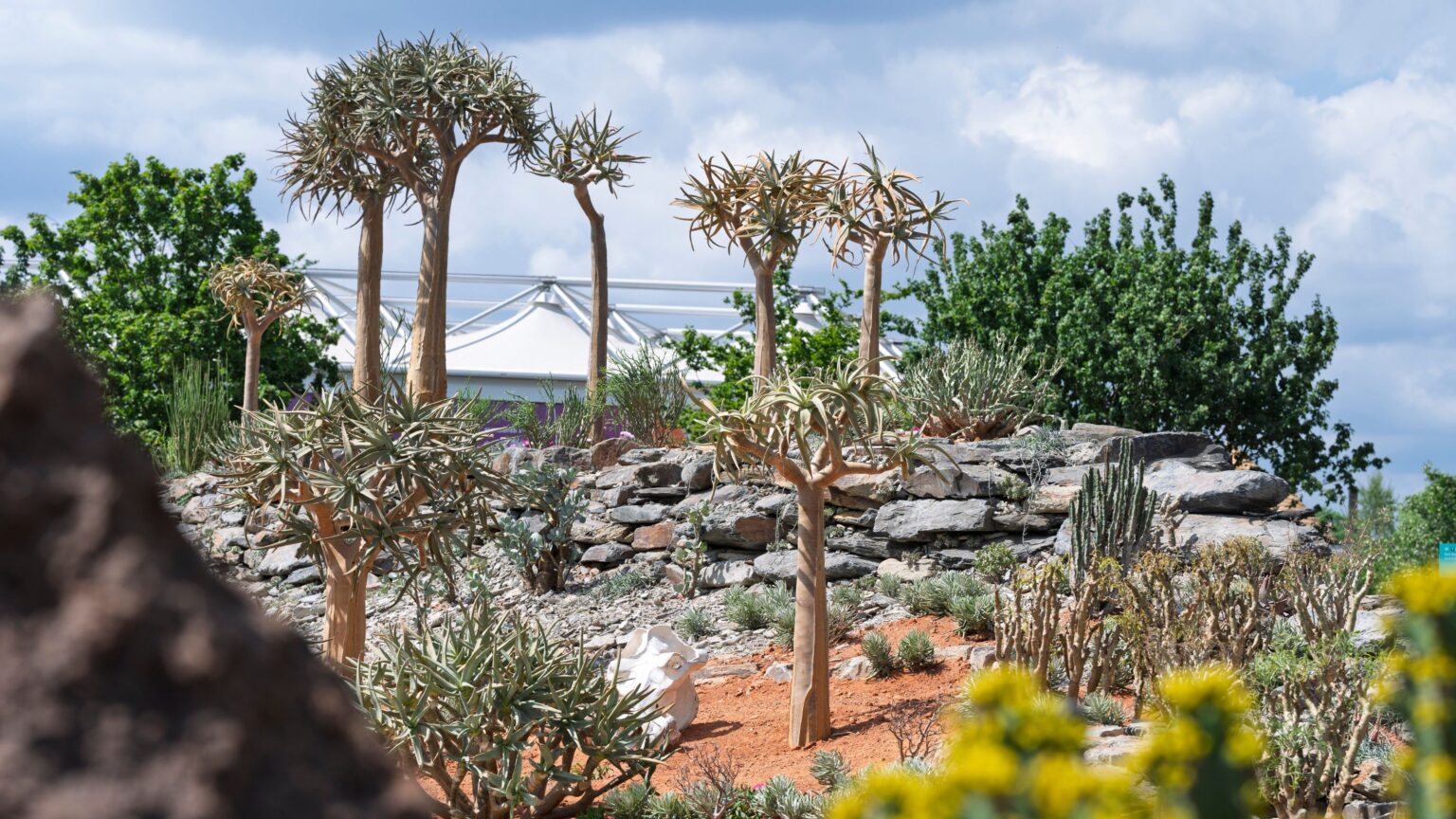The RHS Chelsea Flower Show 2025 has unveiled the event’s first Karoo Succulent Garden, and it’s a golden lesson in outdoor succulent growing.
I’m a huge fan of succulent garden ideas, and during my visit to the RHS Chelsea Flower Show yesterday, I visited the Karoo Succulent Garden, which has been designed by the team at The Newt in Somerset and its South African sister estate, Babylonstoren. The desert landscape is set in South Africa’s Karoo and highlights the diversity of succulents in the region.
We might not be in the heart of South Africa, but the Karoo Succulent Garden offered plenty of inspiration for UK gardens alongside other RHS Chelsea Show 2025 trends. Yesterday, I spoke to The Newt in Somerset’s head gardener, Harry Baldwin, to glean a few tips and variety recommendations.
The Karoo Succulent Garden is a first for Chelsea, and it’s a breathtaking landscape of rock formations, quartz fields and quiver trees. The sun came out just as I began speaking to head gardener Harry, and for a fleeting moment, it felt as though we were in the Karoo region.
We know that drought-tolerant plants are an ever-growing garden trend, and the varieties showcased in this landscape highlight the adaptability of succulents in even the most arid conditions.
I asked Harry which varieties he’d choose for a succulent garden here in the UK, and the first he pointed to were at the base of the shale cliff.
‘If you’re looking for annuals outside, our Livingstone daisies here are a great choice,’ he said. ‘The flower opens when the sun is in full swing, which is why they’re slightly open now, but they’re also known as a succulent.’
Next, Harry showed me the vibrant purple blooms at the top of the hill.
‘We’ve also got Delosperma cooperi, which is just up there with the beautiful purple flowers,’ he said. ‘That’s semi-hardy, but it will grow outside to about -5°C – just keep it dry in the winter.’
Delosperma cooperi is also known as Cooper’s iceplant, and it’s among the best ground cover plants that can help prevent weeds.
The final succulents Harry pointed to were just behind us, dotted around a shimmering quartz field.
‘These are called mesembs, or living stone plants, and as you can see, they are flush with the surface because their characteristic in their native environment is to camouflage themselves to avoid too much exposure to sunlight,’ Harry said.
You’ve probably seen stone plants at your local garden centre before, because they’re popular unkillable houseplants.
What I really loved about the living stone field was the use of quartz.
‘If you touch the quartz, it’s very cold, and the white reflects the heat to keep the area nice and cool,’ Harry explained.
I also asked Harry for advice on growing succulents outdoors here in the UK.
‘If you’re growing a succulent at home, less watering is always better,’ he said. ‘They’re not growing out in the hot semi-desert of the Karoo or anywhere else, so it’s important not to overwater.’
Get the look
Crocus
Delosperma cooperi ‘Jewel of Desert Garnet’
Gardening Express
Delosperma cooperi ‘Table Mountain’
Happy Green Shop
Livingstone Daisy Seeds
So, from the wisdom of The Newt in Somerset’s head gardener, Livingstone daisies, ice plants and livingstone daisies are all brilliant choices for an outdoor succulent garden. They’re brilliantly low-maintenance, and each adds colour, texture and interest to any outdoor space.
If you haven’t bought your tickets to the RHS Chelsea Flower Show 2025 yet, you can still grab them on the website right now.
Read the full article here
